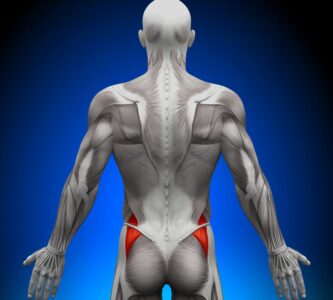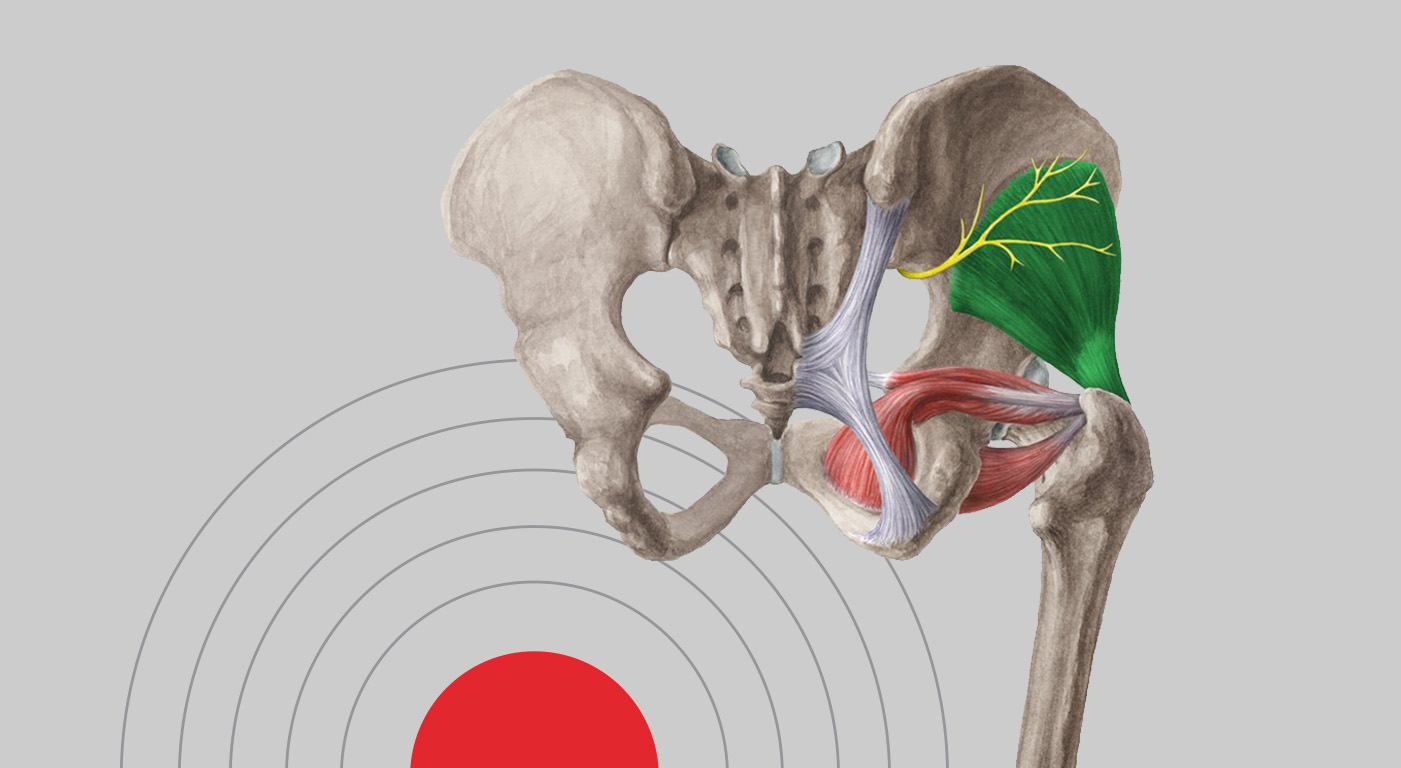The gluteus medius muscle is a key structure in the gluteal region, known for its importance in stabilizing the pelvis and moving the hip. Located on the lateral part of the hip, the gluteus medius is one of the main hip abductor muscles, meaning it is responsible for moving the leg away from the body. Additionally, it plays a crucial role in stabilizing the pelvis during walking and other functional activities.
Anatomy: It originates along the external face of the iliac crest and the gluteal aponeurosis, and inserts at the lesser trochanter in the posterosuperior and lateral area.
Clinical Importance of the Gluteus Medius Muscle

Dysfunction of the gluteus medius muscle can contribute to a variety of musculoskeletal problems, including lower back pain, hip and knee dysfunction, and gait disorders. Weakness or shortening of the gluteus medius can alter the biomechanics of the hip and pelvis, leading to abnormal distribution of forces across the body and increasing the risk of injury.
Along this muscle, myofascial trigger points can be found, which are hyperirritable areas in the muscle tissue. These trigger points can cause referred pain throughout the buttock, in the lumbar and sacral area, and in the back of the thigh. This referred pain can be perceived as a deep, diffuse discomfort that can limit mobility and affect the patient’s quality of life.
Application of Dry Needling in the Gluteus Medius Muscle
Dry needling has been successfully used in the treatment of gluteus medius dysfunction. During the procedure, the therapist identifies myofascial trigger points (MTPs) in the gluteus medius by palpation and then carefully inserts the dry needling needle into these points. Once the needle is in place, a series of techniques, such as needle movement and pressure application, can be performed to deactivate the trigger points and release tension in the muscle.
For applying this technique, the patient is treated in a contralateral decubitus position to the muscle being treated, with the upper leg behind the lower and the knee supported on the table. The needle should have a latero-medial direction, towards the iliac crest. APS needles of 0.30mm x 75mm or 0.30mm x 60mm are used depending on the area of the muscle being treated.
Considerations and Precautions
It is important that dry needling be performed by a trained and experienced therapist. Additionally, safety precautions, such as proper sterilization of the needles and careful identification of surrounding anatomical structures to avoid injuries, should be considered. Dry needling may not be suitable for all patients, and it is important to discuss the risks and benefits with a qualified healthcare professional before undergoing treatment.

